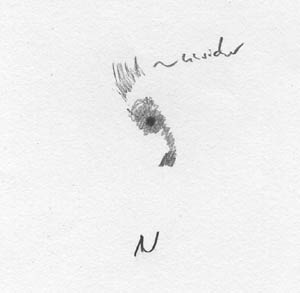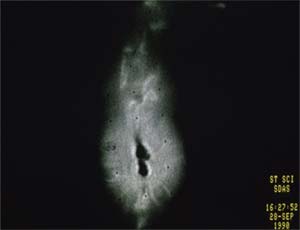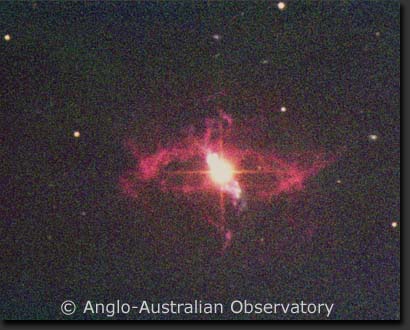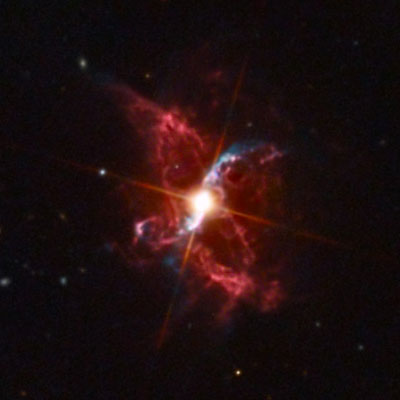
R Aquarii is a symbiotic double star consisting of a Mira-type red giant transferring gas to presumably a White Dwarf (more here). From time to time, the system ejects some of this material. This material forms spiraling filaments that are known as Ced 211.
I had observed R Aqr already some weeks before with a 16 inch Dob under less than optimal seeing conditions, where I could spot the elongated form of the nebula but no further detail. This night, the seeing was better than average. With my 22" Dob at 500x without filter only the conspicuously red giant star was visibly, no nebulosity. With the OIII filter, the brightness was reduced only slightly and a bright small condensation became visible around the now very much suppressed star. On one side of the Nebula, approximately NE, an extension curving toward N could be easily seen, which had another brighter condensation at its tip. At the other side, the nebula was broader and did not extend that far. With UHC filter (Astronomik, with transmission window in the red spectral range), the star became more prominent and with H beta (Lumicon) only the star could be seen. To the left is a rough sketch of what could be seen at the eyepiece using OIII filtering.
Sometimes I suspected more material further out toward South, but I was not completely sure about this.


